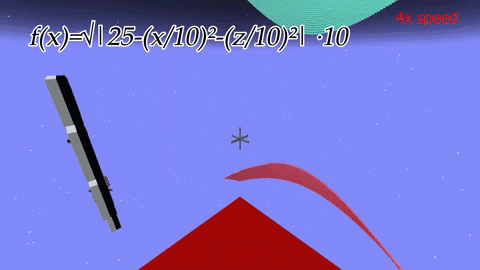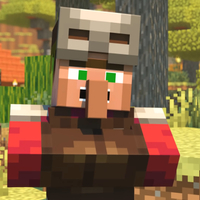This Minecraft 3D graphing calculator is hypnotic and beautiful
Shapes are so pretty.

People have been building calculators in Minecraft for over a decade: Ever since the introduction of Redstone (a block that essentially conducts electricity), it's become a common challenge for players to set themselves. There's even a wiki page dedicated to it.
Calculators are their own branch of hardware design, even though now they're incorporated into every device we use, with a fascinating history of upgrades: one of the key innovations being the graphing calculator. The idea for a calculator that could visually represent functions rather amazingly dates back to 1921, when engineer Edith Clarke built the Clarke calculator for General Electric (it was patented in 1925). It was over 60 years later that Casio would release the snappily named fx7000g (1985), the first mass-market graphing calculator and a gorgeously thicc boi—though true fans know that the Texas Instruments Ti-81 is the sexiest graphing calculator of all. That screen!
Yes I like maths. Someone who likes it far more however is Hanmin Kim, online handle CommanderRedstone, who two years ago built his first version of a graphing calculator within Minecraft. Essentially, you enter the function and then receive a block-based visualisation of whatever shape it creates. The older version was 3D but relatively slow, had less functions, and was generally more limited: but now we're back, baby, with a 3D graphing calculator map that uses floating decimal points, and is much faster and more accurate.
But look, here's the important thing: it's hypnotically beautiful to watch this thing generate shapes.
The creator used a Minecraft feature in datapacks to program the various commands, and now this bad boy is capable of high-speed plotting and showing point values like nobody's business.
Kim built the first version of this when he was in high school: now he's at university, and still using his beloved Ti-84. "I began this project because I was frustrated with how so many online 3D graphing calculators were very 'clunky' and difficult to use," Kim writes. "A lot of them are quite slow, and the controls are not very good."
Minecraft, on the other hand, turns out to be an unusually good fit for a project like this. "The game's blocky grid would sacrifice accuracy but would still be able to show the general shape of the graph without causing a lot of lag while changing perspective like other 3D calculators," writes Kim, "which I believe helps a lot for intuition."
Keep up to date with the most important stories and the best deals, as picked by the PC Gamer team.
The game's controls also make interfacing with the calculator simple, and Kim is not just a lover of math but a math evangelist. "I think making something like this in a game popular as Minecraft is a great way to get people interested in Math," writes Kim. "I've always been interested in Mathematics but it seems as though many people despise it, which I assume is because they were never given a reason to care."
Kim then basically goes on to describe me: "With this, you don't need to be a math wizard or particularly interested in math to find the graphs cool."
It's true! You don't have to love mathematics or graphing calculators to enjoy this: It's just an incredible achievement and wonderful to see these shapes being generated. Kim is mainly happy that people like the visualisations and have been curious about how it works and ask questions, "which I think is a sign that this may be getting more people interested in Math!"
People have been making calculators in Minecraft forever, but this is easily the most beautiful example I've ever seen. Here is Hanmin Kim's website and, if you want to fiddle around with this calculator yourself, it can be downloaded here.
Minecraft potions: Recipes and brewing guide
Minecraft enchantments: Magical reference list
Minecraft villagers: All the jobs and trades
Minecraft realms: How to start your own server

Rich is a games journalist with 15 years' experience, beginning his career on Edge magazine before working for a wide range of outlets, including Ars Technica, Eurogamer, GamesRadar+, Gamespot, the Guardian, IGN, the New Statesman, Polygon, and Vice. He was the editor of Kotaku UK, the UK arm of Kotaku, for three years before joining PC Gamer. He is the author of a Brief History of Video Games, a full history of the medium, which the Midwest Book Review described as "[a] must-read for serious minded game historians and curious video game connoisseurs alike."


